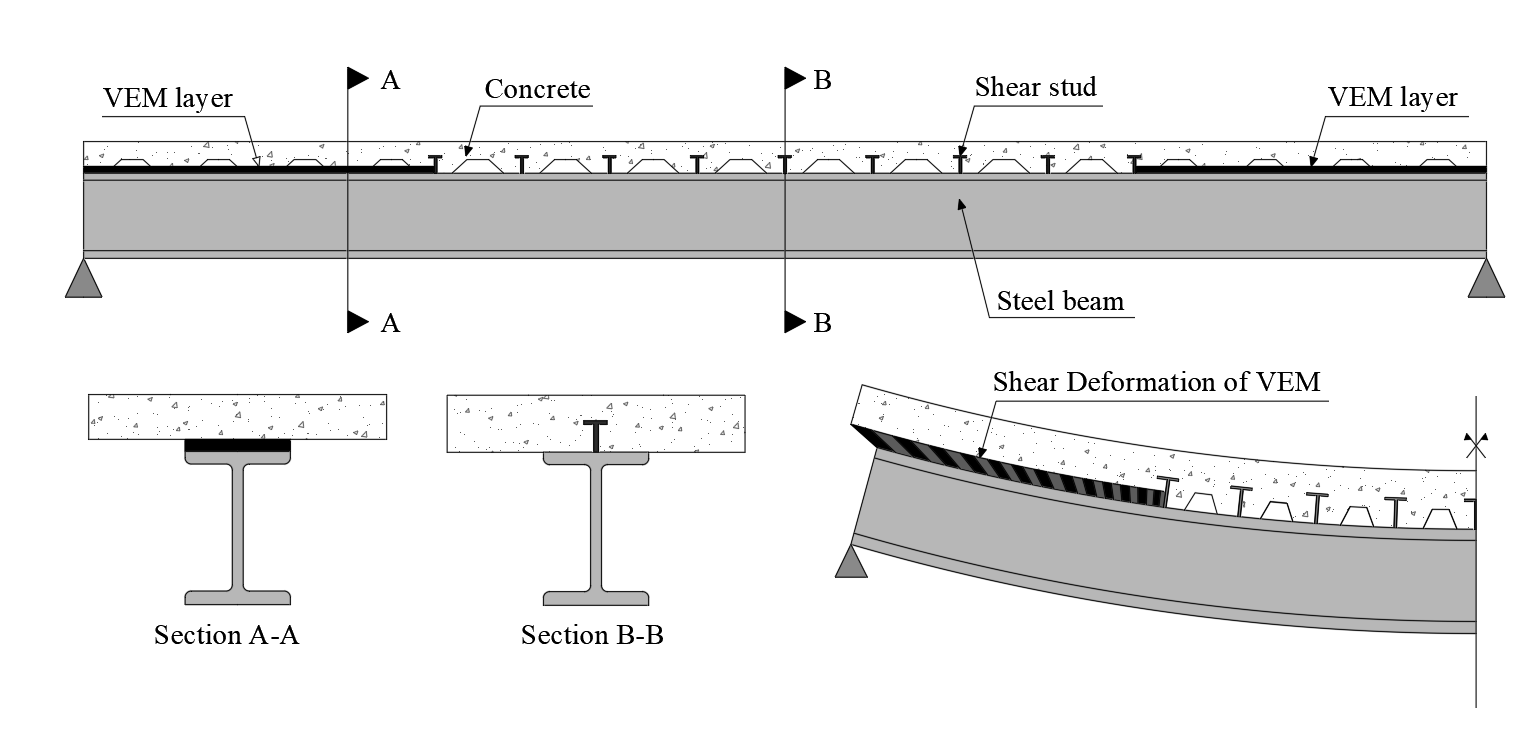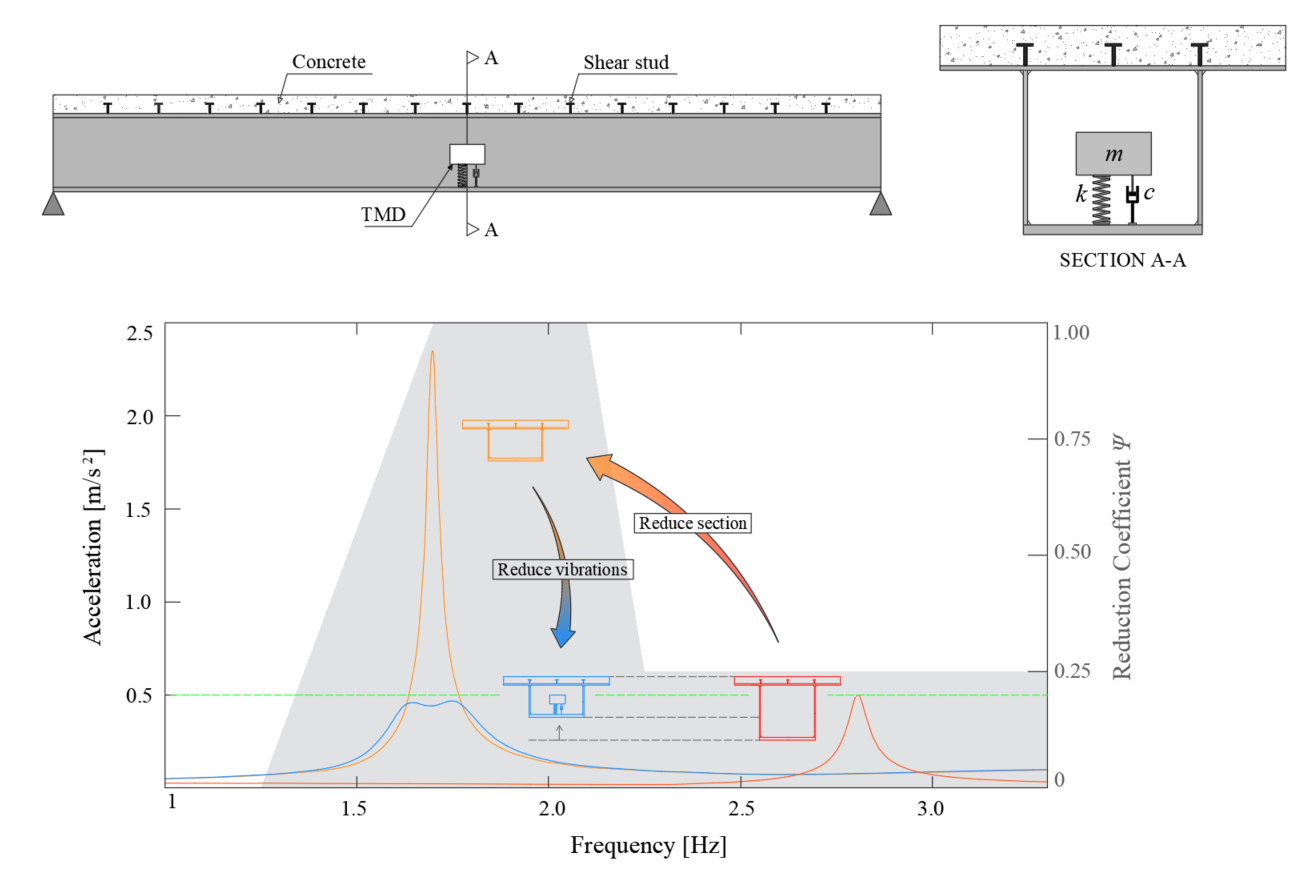Damping-Based Design
In the past decades many structural types have experienced a dead load reduction due to structural optimization and the use of high strength materials. This reduction has been accompanied by increasingly high-demanding vibration serviceability requirements. As a result, the sizing of many dynamically-loaded structures e.g. slender footbridges, high-railway bridges, or lightweight building floors is now conditioned by their dynamic response.
The amplitude of structural resonant vibrations is especially dependable on structures’ dissipation capacity, commonly modeled as structural damping. Knowing this, smart dampers are commonly used in robotics or aeronautics to improve the comfort, safety and life span of structures, however, their use in civil engineering is not widespread and they are only applied in singular and outstanding structures.

With this aim, the necessity of investigating a “new generation” of highly-damped slender structures that integrate a minimum needed structural damping since the design stage. This enables to keep the lightweight nature of modern structures while not oversizing them for fulling dynamic design prerequisites (especially those related to vibration serviceability.
Damping increase may be, in some cases, more efficient than current structural stiffening or mass addition if the dynamic response is a critical constrain for a structural design. In order to implement this new design approach, designers must make use of many damping techniques which can be divided into two main groups. First, dissipative strategies which increase the amount of energy dissipated inside the own structure by means of frictional or viscous mechanisms. Second, inertial controllers, based on devices which apply counteract forces through the movement of an inertial mass in opposite phase to the structural movement. This second technology is commonly represented by the Tuned Mass Damper (TMD).

This new methodology for the design of “lively structures” is being implemented within different structural types by means of integrating the most promising damping techniques found on the literature (as constrained viscoelastic layer treatments, TMDs, viscous dampers, etc.). This work aims to prove that this way of facing the vibration problem, is more efficient in terms of material usage than those strategies based on modifying the structures’ stiffness or mass to overcome the vibration.
Future design of dynamically-loaded structures will go forward such a concept, presented here for the first time as Damping-Based Design.

